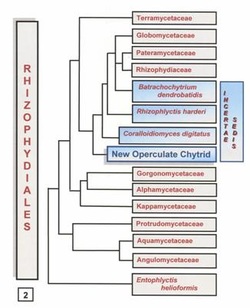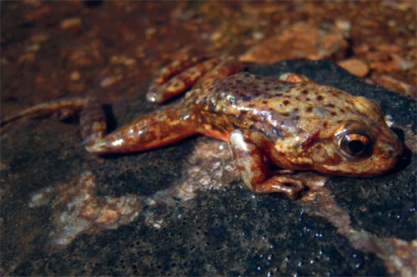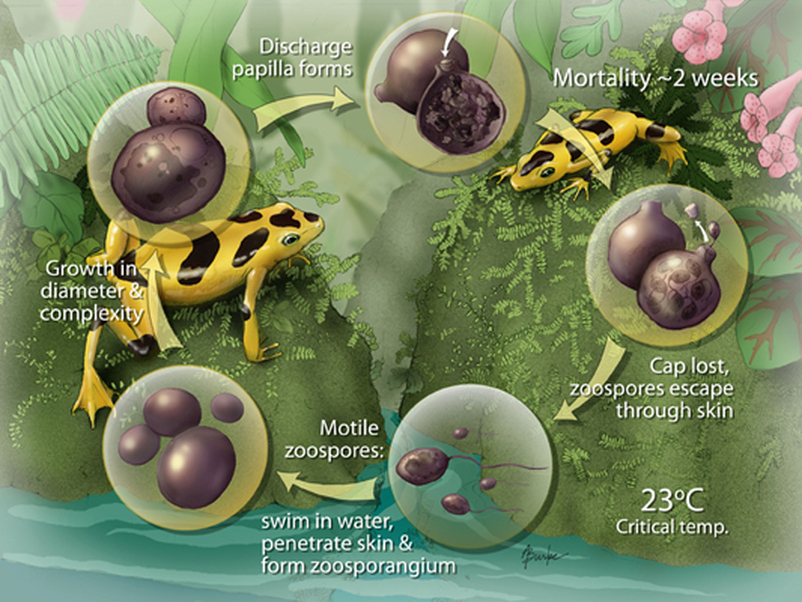 pic (5)
pic (5)
Description(1):
- Zoosporic chytrid fungus that causes chytridiomycosis (a fungal infection of the skin) in amphibians
- Non-hyphal and parasitic
- Has been associated with population declines in endemic amphibian species
- Causes cutaneous mycosis (fungal infection of the skin), or chytridiomycosis, in wild and captive amphibians
- Can remain viable in the environment (especially aquatic environments) for weeks on its own, and may persist in latent infections
Habitat(1):
- Thought to have originated in Africa
- Currently found in upland montane rain forests in Australia and Panama
- Amphibians, lakes, natural forests, riparian zones, water courses
- Reported seen in 38 amphibian species in 12 families, including ranid and hylid frogs, bufonid toads, and plethodontid salamanders
- Found in a range of species and habitats (including African frogs in lowland regions in Africa) but has caused population declines of amphibians species confined to montane rain forests
- Prefers lower temperatures which may explain the high precedence of the fungus in high elevations in the tropics
 Frog affected by the fungus (4)
Frog affected by the fungus (4)
Reproduction(1):
- Reproduces asexually by producing aquatic uniflagellated zoospores in a zoosporangium
- Produces inoperculate, smooth-walled zoosporangia (zoospore containing bodies), which are spherical to subspherical in shape
- Each zoosporangium (10µm to 40µm in diameter) produces a single discharge tube, which penetrates (and protrudes out of) the skin
- Eventually the plug that blocks the release of immature zoospores is shed and the mature zoospores are released
- Zoospores (0.7µm to 6µm in diameter) are elongate to ovoid in shape, each possesses a single posterior flagellum, rendering it motile in water
Interesting Facts(1):
- Parasitic fungus on amphibians
- Can survive on its own in the environment for extended periods of time
- Spores have a single posterior flagellum

